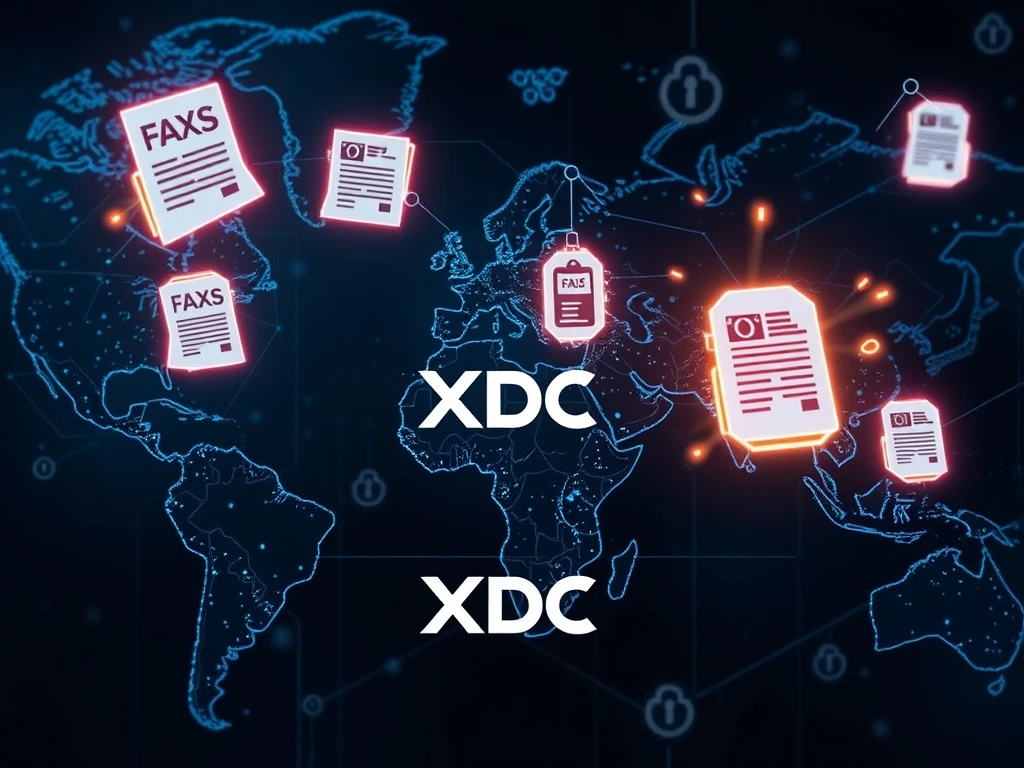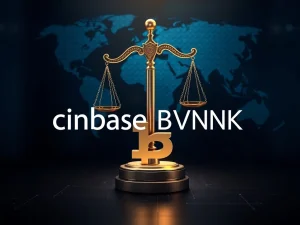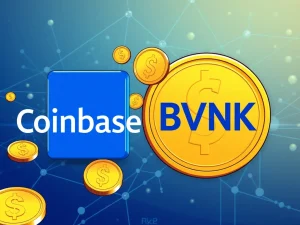Trade Finance Blockchain: Unlocking a $30 Trillion Future with XDC Network

Imagine a global industry worth over $30 trillion annually, an industry that underpins virtually every product you buy and every service you use. Now, imagine that this colossal system still heavily relies on faxes, couriers, and wet-ink signatures. Sounds unbelievable, right? Welcome to the world of global trade finance, a critical yet often overlooked sector where the past and present collide. But a quiet revolution is underway, spearheaded by technologies like the Trade Finance Blockchain, offering a beacon of hope for modernization. Can XDC Network truly fix this antiquated system?
The Astonishing Reality of Global Trade: Why the Global Trade Gap Persists
Behind the glossy headlines of technological advancement in other sectors, trade finance remains remarkably entrenched in manual, paper-heavy processes. This isn’t just an aesthetic issue; it’s a massive inefficiency driving a staggering problem: the global trade gap. This gap, estimated at a colossal $2.5 trillion, represents the unmet demand for financing from otherwise creditworthy companies. It’s a barrier that prevents countless small and medium-sized enterprises (SMEs) from fulfilling orders, expanding their reach, and participating fully in global commerce.
- Paper Predominance: As of 2022, a mere 2% of all bills of lading were issued electronically. The vast majority of cross-border trade still involves physical documents, often transported by couriers, exchanged via fax machines, and requiring multiple wet-ink signatures.
- Fragmented Infrastructure: The global trade ecosystem is a complex web of disparate systems, making seamless communication and data exchange challenging. This fragmentation contributes to delays, errors, and increased operational costs.
- Exclusionary Practices: Due to the high administrative burden and perceived risks associated with manual processes, traditional financial institutions often find it uneconomical to serve SMEs, particularly those in emerging markets. This exacerbates the trade finance gap.
The barriers to digitization are not just technical; they are deeply rooted in legal frameworks. Historically, electronic documents like bills of lading or promissory notes lacked the same legal standing as their paper counterparts. This crucial hurdle is, thankfully, beginning to change. International efforts, such as the UNCITRAL Model Law on Electronic Transferable Records (MLETR), are paving the way for digital documents to gain equal enforceability. G7 countries are aligning with MLETR, signaling a significant shift. This legal evolution, coupled with a consortium of industry players aiming for 100% digital adoption of bills of lading by 2030, sets the stage for technology to step in.
Trade Finance Blockchain: A Digital Lifeline for SMEs?
The increasing number of institutions and governments exploring blockchain’s potential in trade finance isn’t surprising. A well-implemented Trade Finance Blockchain can offer a more efficient, transparent, and inclusive model. By providing an immutable, distributed ledger, blockchain technology can fundamentally transform how trade transactions are initiated, verified, and settled. It promises to:
- Enhance Transparency and Trust: All parties can view the same, verifiable record of a transaction, reducing disputes and the need for intermediaries.
- Improve Efficiency and Speed: Automation of processes, smart contracts, and real-time data exchange can drastically cut down processing times, from weeks to hours or even minutes.
- Reduce Costs: Less paperwork, fewer intermediaries, and streamlined operations lead to significant cost savings for all participants.
- Increase Access to Capital: By making trade assets more transparent and liquid, blockchain can open doors for non-traditional lenders and investors, directly addressing the trade finance gap for SMEs.
While the concept is powerful, the practical application requires a nuanced approach. For an industry as complex and regulated as trade finance, a ‘rip and replace’ strategy is rarely feasible. Instead, the focus is on integrating new technologies with existing systems, building bridges rather than burning them.
The XDC Network Approach: Bridging Tradition with Innovation
Among the notable projects making strides in this arena is the XDC Network. Built specifically for enterprise use cases like trade finance, XDC adopts a hybrid blockchain architecture. This design is crucial: it allows for the integration of private, permissioned systems (where sensitive commercial data can remain confidential) while leveraging the public transparency and security of a blockchain where needed. This pragmatic approach resonates with large institutions hesitant to expose all their data on a public ledger.
XDC Network is not just conceptually sound; it’s technically robust and designed for real-world application:
- ISO 20022 Compliance: This makes XDC compatible with the global messaging standards used by banks and financial institutions worldwide, facilitating seamless integration into existing financial infrastructures.
- High Performance: The network supports over 2,000 transactions per second (TPS) with near-zero fees, making it suitable for high-volume commercial transactions.
- Interoperability: Through the LayerZero protocol, XDC is interoperable with over 125 other blockchains, enhancing its reach and potential for cross-chain transactions in a globalized trade environment.
- Real-World Pilots: XDC is already being utilized in pilot programs across diverse regions, including Asia, Latin America, and Africa, demonstrating its practical utility and adaptability to various market conditions.
The positioning of XDC is clear: its mission is not to disrupt the established trade finance ecosystem but to ‘retrofit’ its backend with programmable, efficient infrastructure. The core focus is on enabling digital asset issuance, automation, and capital access without forcing institutions to abandon their familiar, proven workflows. This cautious, incremental adoption strategy is key to gaining trust and achieving widespread implementation in a risk-averse industry.
Transforming Commerce: How Digital Trade Documents Are Revolutionizing Flow
The heart of modernizing trade finance lies in the shift from physical to Digital Trade Documents. Platforms like tradefi.network leverage the XDC Network to represent traditional trade documents – such as invoices, bills of lading, and letters of credit – as digital tokens. This seemingly simple transformation unlocks a cascade of benefits:
- Automation and Real-time Verification: Once digitized, documents can be automatically verified against predefined rules, significantly reducing manual checks and human error. This enables faster processing and real-time updates on document status.
- Enhanced Security and Authenticity: Blockchain’s immutable ledger ensures that once a document is recorded, it cannot be altered or forged. This drastically reduces fraud risks and provides an undeniable audit trail.
- Streamlined Workflows: Digital documents can flow seamlessly between parties, eliminating delays associated with physical transportation and manual data entry. This creates a more efficient and less error-prone supply chain.
- Global Accessibility: With digital documents, geographical barriers diminish. Parties across the globe can access, verify, and act upon trade documents almost instantly, accelerating global commerce.
The legal recognition of these digital instruments, facilitated by frameworks like MLETR, is paramount. Without legal enforceability, the technological advancements would be moot. As legal frameworks evolve, the pathway for widespread adoption of digital trade documents becomes clearer, setting the stage for a truly paperless future in global trade.
Beyond Invoices: The Power of Tokenized Trade and Liquidity
One of the most transformative aspects of blockchain in trade finance is the ability to enable Tokenized Trade. This means representing real-world trade assets, like an invoice or a bill of lading, as a digital token on the blockchain. This token carries all the relevant information and legal rights associated with the underlying asset. This has two profound benefits:
- Enabling Automation and Real-Time Verification: As mentioned, tokenization facilitates the automation of processes, from tracking goods to verifying payment terms. It allows for instant, transparent verification of the document’s authenticity and status.
- Opening the Door for Non-Bank Capital: Perhaps even more significantly, tokenization makes trade instruments more accessible and liquid. Traditionally, only large banks could participate in trade finance. With tokenized assets, these instruments can be fractionalized and sold to a broader pool of global investors, including asset managers, hedge funds, and even individual accredited investors. This influx of non-bank capital provides much-needed liquidity for SMEs that might otherwise be overlooked by traditional lenders.
These aren’t just theoretical concepts. They are being tested and proven in the real world:
- In Latin America, SMEs have successfully secured financing by tokenizing their invoices on the XDC Network, turning their future receivables into immediate capital.
- In Asia, an electronic bill of lading, registered on the XDC Network, was successfully used as collateral for a loan. This groundbreaking move helped slash the time to loan disbursement from an average of two weeks down to less than three hours. This dramatic reduction in time to capital is a game-changer for businesses dependent on swift financing to fulfill orders.
The ability to ‘tokenize’ these assets creates a new asset class, democratizing access to trade finance investment and empowering businesses that previously faced insurmountable barriers.
Navigating the Future: Challenges and Opportunities for Blockchain in Trade
While the potential of blockchain in trade finance is immense, its journey to becoming a permanent fixture is still unfolding. Several challenges must be addressed for widespread adoption:
- Legal Harmonization: Despite progress with MLETR, legal recognition of digital trade documents remains uneven across different jurisdictions. A truly global system requires consistent legal frameworks worldwide.
- Data Privacy and Confidentiality: While hybrid blockchains like XDC offer solutions, ensuring the confidentiality of sensitive commercial data while leveraging public ledger benefits remains a complex balancing act.
- Regulatory Compliance: Adhering to diverse and evolving regulations, including Anti-Money Laundering (AML), Know Your Customer (KYC), and sanctions screening, is critical for financial institutions. Blockchain solutions must seamlessly integrate these compliance requirements.
- Interoperability with Legacy Systems: The global trade finance ecosystem is vast and comprises numerous legacy systems. Seamless interoperability between blockchain platforms and these older systems is essential for smooth transitions and avoids creating new silos.
- Scalability and Performance: While XDC offers high TPS, ensuring that blockchain networks can handle the immense volume of global trade transactions without compromising speed or cost remains a continuous challenge for the broader industry.
- Adoption Inertia and Cultural Shift: Overcoming resistance to change within established institutions and fostering a new mindset around digital processes will require sustained effort and education.
Despite these hurdles, the opportunities are compelling. Blockchain promises to unlock unprecedented efficiencies, reduce risks, and foster greater financial inclusion. The focus is clearly shifting from speculative blockchain use cases to targeted, functional applications that solve real-world problems. Rather than seeking to replace the entire system, technologies like XDC are slowly and strategically fitting around it, filling critical gaps where existing tools fall short.
A Future Rewired, Not Replaced
The vision of a fully digitized, highly efficient global trade finance system is no longer a distant dream. With the advent of hybrid blockchain platforms like the XDC Network, the $30 trillion trade system is gradually being rewired. From eliminating faxes to democratizing access to capital for SMEs, the journey is one of incremental yet profound transformation. While challenges persist, the demonstrable benefits and ongoing real-world applications suggest that blockchain is poised to become an indispensable component of the future of global commerce, slowly but surely paving the way for a more inclusive, transparent, and efficient trade ecosystem.
This article does not contain investment advice or recommendations. Every investment and trading move involves risk, and readers should conduct their own research when making a decision. This article is for general information purposes and is not intended to be and should not be taken as legal or investment advice. The views, thoughts, and opinions expressed here are the author’s alone and do not necessarily reflect or represent the views and opinions of Crypto News Insights. Crypto News Insights does not endorse the content of this article nor any product mentioned herein. Readers should do their own research before taking any action related to any product or company mentioned and carry full responsibility for their decisions.







